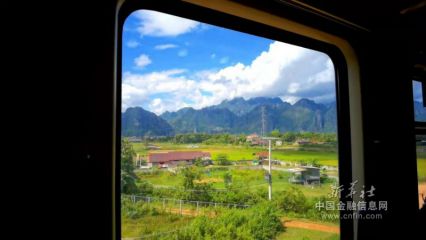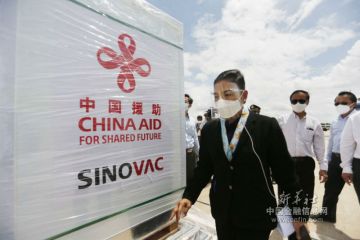The Role of Emerging Asia in Global Trade Governance[1]
Dr.Ben Shenglin
ZhejiangUniversity, China
In the interest of time I will be direct with the points I want to make today: we have serious governance issues on global trade and investment; Free Trade Agreements (FTAs) have been rising, probably at the expense of WTO’s diminishing role; and Emerging Asia especiallyChina and India must take things into our own hands.
Let me begin with some background information and the evolutions that have led us to the“competing globalisations” that we are seeing and talking about today. Then Iwill share my thoughts about the role that the emerging Asia, in particula rChina and India, must play in the re-configuration of global trade governance and architecture.
Allow me to talk about the evolution of global trade regime first.
The long journey from ITO to WTO
International Trade Organization (“ITO”) was an integral part of overall post-WWII global governance framework that had been negotiated and agreed to in 1944, alongside Bretton Woods system, which led tothe establishment of the IMF and World Bank. However ITO was not launched due to the failure of a few countries (including US) to secure the necessary domestic approvals. As such, the world had to end up with something called GATT(General Agreement of Trade and Tariff) in 1946. While not downplaying its importance and meaningful contributions to global trade, the fact that GATT was sometimes sarcastically referred to as Gentlemen’s Agreement to Talk and Talk speaks for its lack of effectiveness.
After nearly five decades, GATT finally evolved into World Trade Organization in 1994, with the promising future that it would finally catch up with their financial siblings - IMF and World Bank. The world waited 50 years before we had an organization overseeing the global trade.
Today WTO has over 167 members, with thelatest being Russia and Kazakhstan. China joined the club in 2001,which markeda beginning of a golden decade for Chinese growth. However thanks to itsconsensus-based governance model, WTO, with new members joining, has struggledto reach agreements, not to mention actions and results. Doha Development Roundhas stalled over the past 10 years, without much progress made and expected inprospect.
The Diminishing WTO & The Rise of FTAs
Out of understandable frustrations with lack of WTO progress and the geopolitical considerations, national governments have accelerated their effort to forge their own regional and plural-lateral organizations to bypass WTO. Various initiatives have been undertaken in different shapes andforms, with different focuses and country leadership, and with variant degrees of successes.
While it took 50 years for the world to establish a global trade watchdog – WTO, it has taken a much shorter time, less than 15 years to see its role significantly diminished and the rise of FTAs.
In Asia, the ASEAN-centered RCEP (TheRegional Comprehensive Economic Partnership) was introduced in 2011, with China, Japan, South Korea, India, Australia and New Zealand joining the queue, and the group started formal negotiation in 2012. So far 14 rounds have been conducted and the final round (Round 15) is planned for Sept 2016. The RCEPcomprises an economic size of over GDP $20 Trillion, a population of 3 billion and accounts for over 40% of world trade activities.
On parallel tracks in the making has been the TPP – Trans-Pacific Partnership, which comprise 12 countries in the PacificRim. While TPP’s origin traces back to 2005 with only four members (Australia,New Zealand, Singapore and Brunei), the joining of USA in the negotiations in 2008 marked a turning point for TPP. TPP was signed last month with membership including all NAFTA[2]countries, half (i.e. 7 members[3])of current RCEP as well as a few South American countries. TPP[4]would have largely mirrored the APEC structure had China been included.
In 2013, China proposed the ambitious One Belt & One Road (OBOR) Initiative, which is envisaged to connect China with rest of Asia and all the way to Middle East and Europe. To support OBOR, China has rolled out and implemented various plans including the establishment of AIIB, NDB and Silk Road Fund. AIIB and NDB have been considered the rivals to existent players such as ADB and World Bank, and similarly OBOR is sometimes interpreted as China’s strategy to counter the present, US-dominated global governance architecture. OBOR is more Asia-Europe partnership and involves more developing countries.
In addition to these regional orinter-regional initiatives, governments have been pursuing some bilateral and sub-regional trade deals. For example, the Bangladesh, Bhutan, India, Nepal(BBIN) Initiative is a sub-regional quadrilateral coordinative architecture of countries in South Asia, led by India. Originated in 1996, BBIN operates through Joint Working Groups, focusing on areas of cooperation such as water resources management, connectivity o fpower grids, multi-modal transport, and freight and trade infrastructure.
All Roads Lead to Rome? Will FTAs Help Global Trade?
Are FTAs making the world closer to an open world in trade? There is no clarity or consensus on the answer. Considering the mind-boggling complexity and diversity of the scope and scale of each and every FTA covering numerous and different sectors, one thing people may be able to agree to is that the FTAs have probably been making trade lawyers richer and bureaucrats busier. However, how much of the intended goals of streamlining the global trade process has been achieved is a big question.
Given the competing and overlapping nature of some of the FTAs, the proliferation of FTAs[5] has undermined WTO’s roles both as the architect of and watchdog for global trade. The reversal of WTO’s fortune is a reflection of the shifts in sentimen tand policies towards globalization in recent years, with national governments backpedalling their previous pro-globalization stances against the background of rising nationalism.
However, FTAs ought not to be necessarily competing with each other or with WTO. If structured on standardized and streamlined terms of trade and based on thespirit of openness and inclusiveness, FTAs can help make the ultimately globaltrade negotiations simpler, thus complementing the global trade architecture.However the current divergence of FTAs may be leading us down a different global trade path: conflicting regional trade blocks is like the Cold War camps may be hurting, instead of helping, global trade. This also may potentially undermine the foundation of global trade architecture and governance structure, just when the world needs them most. Therefore not all roads will lead to Rome.
Choosing the path of FTAs may be easier for many national governments and politicians in the short run, but they may not lead us to the destination of an inclusive and open global trade regime the world need and deserves to have, or even make it more likely for us to get there.
The Role of Emerging Asia in The New World Order
It is worth noting that globalization and digitization tend to go hand-in-hand. These are the two most important trends that have characterized what we call New Economy. I came from Hangzhou, where Alibaba was founded and is headquartered. From a technology point of view, the digital connectivity has made it possible for cross-border trade to be as simple as domestic trade, provided that governments do not impose various barriers, both trade and non-trade. So while digitization has made the world much better connected and has made cross-border trade potentially as simple as domestic transactions, the FTAs and the regionalization of trade regimes may be erecting unnecessary artificial barriers to global trade, thus hurting the broader globalization and integrations.
What should and can we do with FTAs? What do we need? We need more inclusive, not divisive free trade agreements. We need complementing FTAs, not competing and conflicting trade regimes. We need visionary, courageous and responsible leadership. We need global leadership who see beyond their narrowly defined national interests, who rise above their own national or regional interests to strive for the common good of the world.
What can Emerging Asia do? As a region, emerging Asia’s share of global trade and GDP has been increasingly rapidly, yet the existent global governance structure has been outdated and has not been evolving or in some cases not evolving fast enough to reflect the new economic reality. Had World Bank and IMF been more adaptive to the changes, we probably would not have had to have AIIB or NDB.Had WTO been more effective and some key players been exercising theirnegotiating powers more responsibly by focusing as much as, if not more, on theglobal common good, we would have not needed to have so many FTAs.
There is an old Chinese saying: It isbetter to have a good neighbor than a distant relative, which says theimportance of “good neighborly ties”. I am delighted to see that China andIndia have partnered in AIIB, NDB and a number of other areas. I am equally delightedto see the rising flows of bilateral trade and investment, I cannot think anyreason why China and India, the two fastest growing economies, the two mostpopulous countries, the two people most eager to catch the wagon of newindustrial revolution and the new economy, the two important countries not justin emerging Asia but also in the world, cannot or should not work more closelytogether to seek more common good for emerging Asia, for the developingeconomies and the world as a whole. If they do, we all will live in a muchbetter world. The world needs that and I am hopeful that we will get there.
Thank you!
[1] This is based on the author’s speech at Raisina Dialogue Session “Competing Globalizations: Managing Economic& Trade Regimes in Asia”, held in Delhi, India on March 2, 2016.
[2] North America Free Trade Agreement, which is a trade block comprising Canada, Mexico and USA. NAFTA was signed in 1992 and went into effect on Jan 1, 1994.
[3] The seven countries are Australia, Brunei, Japan, Malaysia, NewZealand, Singapore and Viet Nam. A few more have indicated their interests, including Indonesia, Laos, Philippines, South Korea, and Thailand. Taiwan has also expressed interest to apply.
[4] Another equally, if not more, ambitious FTA is that Trans-Atlantic Trade & Investment Partnership (TTIP), which will be the NATO equivalent in trade and investment area.
[5] According to WTO database, there are about 460 FTAs or PTAs (preferential trade agreements) that have been notified andregistered.















